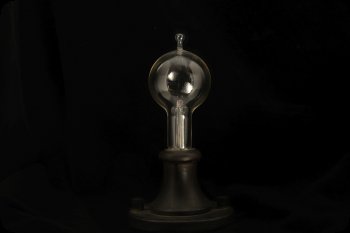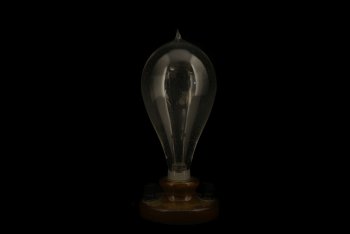19th Century Light Bulbs
Thomas Edison and Nikola Tesla were engaged in a heated rivalry (known as the War of the Currents) to see whose invention would ultimately be adopted by the world at large. The first light bulb pictured here is a model of the first incandescent bulb invented by Thomas Edison. It ran on direct current (DC), a current of electricity that runs continuously in a single direction. While DC was standard in the United States in the early years of electricity, it could not easily be converted to higher or lower voltages. Nikola Tesla solved that problem by developing alternating current (AC), which could easily be converted to different voltages using a transformer.
Their rivalry would ultimately be decided in 1893. The Chicago World's Fair was the first fair to be lit entirely by electricity, a spectacle the likes of which the country had never seen. Whoever won the contract to light the fair would likely light the world. Edison entered a bid of $554,000 to light the fair using direct current, but he was bested by Westinghouse, who had purchased the patent for Tesla's invention and entered a bid of $399,000 for the World's fair job. Disappointed that he lost the contract, Edison refused to sell Westinghouse any light bulbs, so Westinghouse developed the second bulb pictured. Over two hundred thousand of these bulbs illuminated the World’s Fair, dazzling the country with the potential of alternating current. Over the next decade, AC became the standard for 80% of the country.






